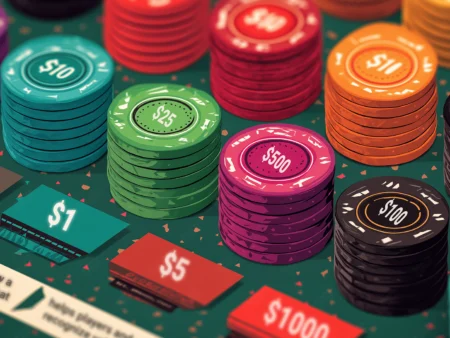You have heard the legend, aces and eights, the dead man’s hand.
Here is what you actually need to know if you play for real money.
The story is famous, the fifth card is unknown, and the only thing that matters at the table is how you turn that nickname into edge. We will cut through the myths, explain why black aces and black eights play like any two pair, and show when to value bet, when to control the pot, and when the superstition across the felt becomes your profit.
Table of contents
What is the dead man’s hand in poker
Dead man’s hand meaning
The dead man’s hand is a nickname for two pair, black aces and black eights. It is part history, part table lore.
There is no special rule or ranking attached to it, it is simply two pair with a story attached.
Dead man’s hand cards
When players say “aces and eights,” they usually mean Ace of Clubs, Ace of Spades, Eight of Clubs, and Eight of Spades. The suits matter to the legend only because they are black. You might hear other suit combos in conversation, but the consistent piece is black aces with black eights.
Why is it called the dead man’s hand
Wild Bill Hickok hand, the moment in Deadwood
The scene most players picture is Deadwood, South Dakota, August 1876.
James Butler “Wild Bill” Hickok takes a seat in Nuttall & Mann’s Saloon No. 10, reluctantly facing away from the wall after failing to get his usual chair with his back protected. A drifter named Jack McCall steps in and fires. The room locks in silence, then the stories start.
Newspapers and later retellings attach the “last hand” to aces and eights, and that pairing becomes poker shorthand for fate at the table. The exact fifth card is argued in books, museum placards, and bar talk, which is why you will hear different versions.
What stuck across generations is simple, black aces with black eights, a saloon shooting, and a nickname that turned two pair into legend.
What is the fifth card in a dead man’s hand
Nobody can confirm it with certainty. You will hear different fifth cards, sometimes a five, sometimes a diamond, sometimes a nine. There is no primary source that nails it down, so the only reliable piece is aces and eights.
Common fifth card claims and why they differ:
Old newspapers were inconsistent. Witnesses disagreed. Museums and books chose different versions. That is why search results and bar stories clash.
Treat the fifth card as unknown and move on to what actually affects your win rate.
How to play the dead man’s hand today
Postflop reality of aces and eights as two pair
A two pair is strong, but it is not invincible. Position, stack depth, and board texture decide your line.
If you need a quick refresher on positions and betting rounds, review the Texas Hold’em rules before you study these spots.
Example 1
You hold Ace of Spades and Eight of Spades on a board Ace of Hearts, Eight of Diamonds, Four of Clubs. Single raised pot, heads up, 100 big blinds deep. On a blank turn, keep building the pot with a size that charges top pair and draws.
Example 2
You hold Ace of Clubs and Eight of Clubs on Ace of Spades, Eight of Spades, Nine of Spades. Your two pair is vulnerable. Lean toward bet sizing that reduces your opponent’s equity and be ready to fold to heavy action if the turn completes flushes and straights.
Coordinated boards
On draw heavy textures, protect your hand. Use larger sizes on the flop and turn to deny equity to spade, straight, and combo draws.
If you face a raise from a tight player pool on the turn when the draw completes, slow down and assign ranges rather than “protecting your legend.”
Paired or dry boards
On ace high, rainbow boards that brick out, your two pair prints value. Think thin value on rivers against capped ranges. Avoid giving free cards when the deck has many bad runouts. If multiway, respect check raises from passive players, they rarely bluff those lines.
Live reads and psychology
Some opponents get oddly careful when they notice “aces and eights.”
If you flash a black ace by accident and see a change in posture, bet for value.
If a regular tries to needle you with a “dead man’s hand” comment, consider whether they are buying a cheap showdown. Live edges come from these small human reactions, not the story itself.
Online poker application
Online removes superstition, so lean on data.
Tag hands in your tracker, review how often you slow play two pair on wet boards, and measure outcomes.
If your database shows you lose big pots when the board runs four to a straight, start checking more turns and rivers in those spots.
Odds and frequency of aces and eights
How often two pair appears by the river
Players see two pair more often than they think by the river, but specific combinations are still rare.
The exact frequency is less useful than the habit it creates. People overcommit when they finally have two pair.
Your edge comes from betting bigger when you are ahead and folding cleaner when you are behind.
Why black aces and black eights are far rarer
Suits add strict filters. Black aces with black eights need precise combos, so you will not see them often. Do not build reads around the nickname. Build reads around position, raise sizes, and how your player pool reacts to paired boards.
Practical takeaway
The legend is sticky, your job is not.
Play the math, not the myth. Let other players react to the name while you react to the board.
Myths vs facts
It is not a special rules hand
There is no separate power level for the dead man’s hand. It ranks as two pair, aces over eights, and still depends on kickers when needed.
The fifth card is not confirmed
Treat every “final card” claim as a story, not settled history.
For players, the takeaway is practical. Do not chase certainty where none exists.
Learn the legend, then focus on decisions that move your win rate. The mystery card does not change how you value two pair, position, or board texture.
It is not cursed or blessed
Luck swings. Strategy wins.
If you catch yourself narrating the hand in your head, pause and choose the line that grows EV, not drama.
Dead man’s hand in pop culture
Films and TV love it because the image is clean, two black aces and two black eights on green felt.
That keeps the phrase alive in everyday talk, which is why new players search for it and old players smile when it shows up. Enjoy the story, then get back to the work of hand reading, and keep your table behavior sharp with our table and casino etiquette guide.
Ready to play for real?
If you want the story without the guesswork, take a seat at regulated live poker tables.
Start with limits that fit your bankroll, check table volume at your peak hours, and favor rooms with clear rake and fast payouts.
Compare trusted operators in our live dealers casino reviews and pick a table that matches your style.
FAQs on Dead Mans Hand
Two pair, black aces and black eights. It is a nickname tied to a historical story, not a special ranking.
A well known figure was shot during a poker game, later reports linked his final hand to aces and eights, and the name stuck.
It is unknown. Different accounts list different cards, none are definitive.
The legend points to Wild Bill Hickok. The hand details were attached after the fact, which is why versions differ.
Just a story. Your outcome depends on board texture, position and how you size bets, not on superstition.












































